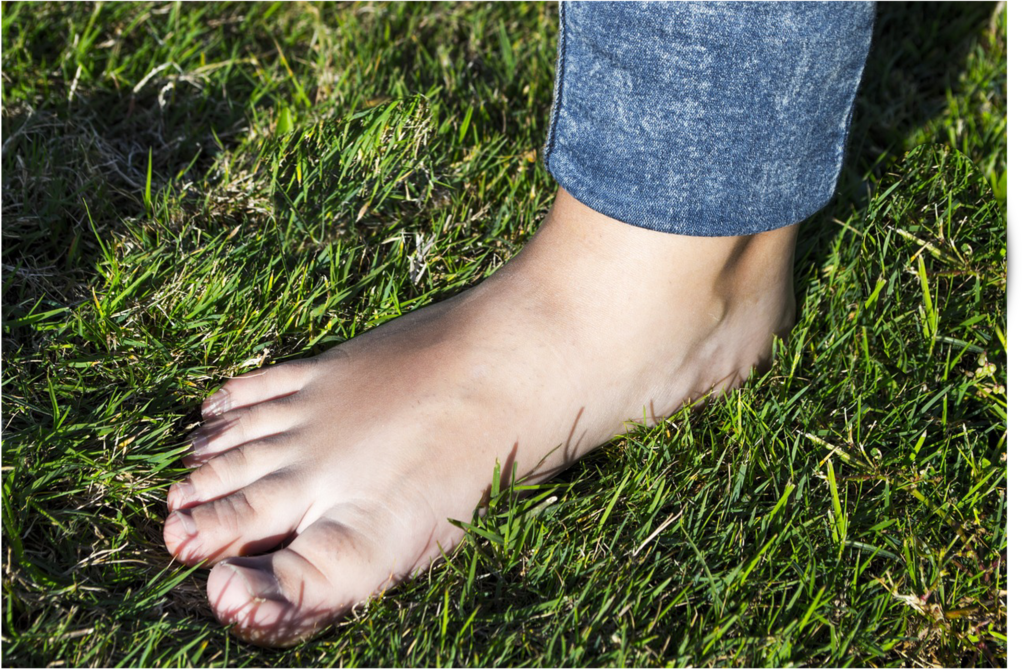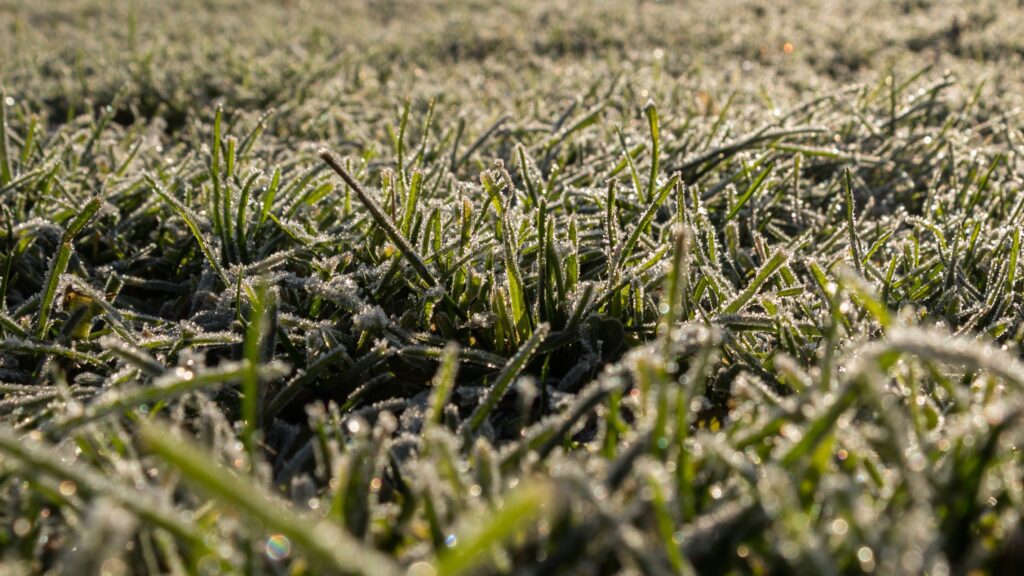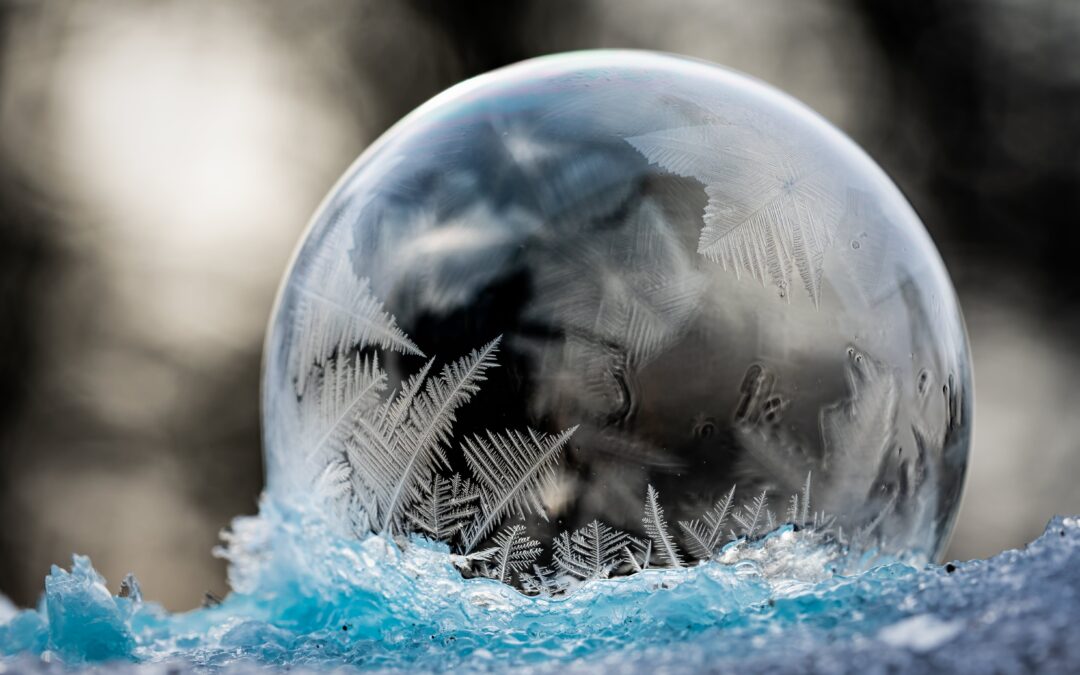Have you ever scolded someone (or been the one scolded at by someone) for stepping on your grass while it is frosted over? Well, believe it or not, it isn’t just some paranoia. There’s real science behind it – and it’s actually pretty cool stuff!
First, let’s start off with a fun fact about grass! When measured by weight, the average turfgrass is made up of 75-80% water, which is pretty similar to the amount of water present in the average human body’s bloodstream (which is 83%). When we step on grass in the summertime, the grass blades are softer. The liquid inside the blades can be easily moved around because the grass is constantly growing and regenerating cells. It is in a “flow state”. Unless something is sitting on the grass for days at a time, such as an inflatable pool, a tarp, a sandbox, etc., the grass blades are meant to withstand being bent up and down and pushed all around when we ride our lawn mowers or run around on them.

When outdoor temperatures dip below 32 degrees Fahrenheit where the water can no longer be in a flow state, it is forced into a solid state. If the water in a grass blade is forced into a solid state, then it is no longer flexible, and the blades basically turn into stiff icicles. This weather effect is normal, and the grass expects this to happen year after year, as it indicates to the grass that it is entering into a season of dormancy that it must prepare for. However, heavy foot traffic should be avoided when there is anywhere from a thin layer of frost to a thin layer of snow on the lawn to avoid causing permanent damage to these stiff blades.

Lastly, there is a separate science to another kind of “frost tracking” damage (aka heavy foot traffic on frosted grass) that can occur during the seasons of Late Fall and Early Spring, in particular. During these times of the year, the grass is either still green and healthy or is just turning green and healthy. Then, when frost occurs overnight and someone walks across the lawn while it is frosted over, it puts a lot of pressure on each blade, creating a compacting or internal crushing effect. All that compaction allows for ice crystals to puncture the cell walls of the alive and healthy grass blades, which results in the grass plant dying.
In either of these cases, all you need to do next is measure dying spots throughout your lawn that are in the shape of footprints, and you’ll be able to find the culprit! 😉
Want to learn about common causes of “Winter Kill”? 1. Snow Mold 2. Winter Desiccation
Follow us on Social Media for Daily Blog Post Updates Here: https://www.facebook.com/StormTheLawnPro/
Not a Customer? Enter Your Address Here and Receive a FREE Estimate!
Limited Time Only Prepayment Discount for 2024 is Happening Now!

